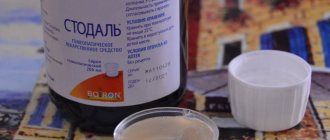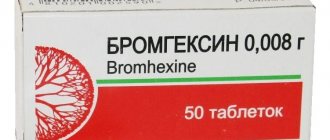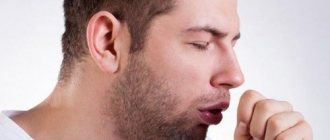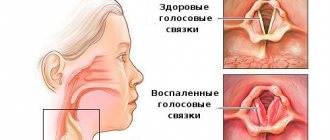Cough can be a bother at any time of the year. Together with a therapist, we understand the possible causes and consider treatment options.
The respiratory tract of our body is covered with a thin layer of cells with cilia. They constantly move and remove all the mucus and dirt from the lungs and bronchi to the outside. But if the amount of irritants or mucus is too large, or if a foreign body enters, the second defense mechanism comes to the aid of the first - coughing.
Andrey Besedin, PhD, internist, family doctor at GMS Clinic.
Coughing is a protective reflex of our respiratory tract. It is needed to shake off all the excess that gets there. Coughing effectively rids the body of almost any irritant that may enter the respiratory tract.
Why does a cough appear?
A cough can start due to any object or substance entering the respiratory tract: food fragments, perfume vapors or aerosols. Sometimes it is caused by allergies, and sometimes by stress.
Most often, a cough is provoked by viruses or bacteria and their waste products. In this case, the cough is called infectious, and its manifestations will differ depending on the pathogen:
Manifestations of an infectious cough:
- Coronavirus infection. The cough is most often dry and debilitating; in addition, there are other symptoms: shortness of breath, weakness, fever, headache.
- Pneumonia. Symptoms depend on the type of infection, but often the disease begins with coughing, which increases and turns into a constant wet cough. The amount of sputum increases, chest pain, fever, and weakness may appear. There is a general deterioration in the condition.
- Bronchitis. The cough is wet and becomes easier after clearing the throat. When breathing deeply, sounds are sometimes heard in the chest - they are caused by the fact that phlegm accumulates in the bronchi.
- Whooping cough. The cough with this disease is debilitating, paroxysmal, prolonged, and interferes with sleep. It is difficult to find a position to relieve the condition. Constant coughing causes pain in the intercostal muscles, and hemorrhage may occur in the eye. Over time, the frequency of attacks decreases, but this condition sometimes lasts for several months.
A cough can be a sign not only of an infectious disease, but also of other conditions and diseases.
The most common ones are:
- Allergies and asthma. In most cases, coughing attacks occur after contact with an irritant in the air.
- Chronic obstructive pulmonary disease (COPD) is a lung disease characterized by chronic restriction of air flow in the airways. The main symptoms of COPD are cough with phlegm and shortness of breath.
- Heartburn or gastroesophageal reflux disease (GERD). The movement of acidic stomach contents up the esophagus causes irritation of the mucous membrane of the throat and vocal cords, which contributes to coughing and tickling.
- Nervous breakdown. In a stressful situation, especially in children, nervous coughing is possible as a variant of a nervous disorder such as a tic.
- Foreign body or tumor.
- Smoking.
- Tuberculosis.
Vomiting and diarrhea
Acute gastroenteritis is characterized by increased body temperature (from low-grade fever to high fever), vomiting, and loose stools. The most common cause of gastroenteritis is rotavirus. The most severe episode of rotavirus gastroenteritis occurs in children aged 6 months to 2–3 years. The peak incidence of this infection occurs in winter - spring.
The danger of viral gastroenteritis is associated with rapid dehydration and electrolyte disturbances due to the loss of water and salts through loose stools and vomiting. Therefore, it is fundamentally important to feed the child. In order not to provoke vomiting, you need to drink fractionally (1 - 2 teaspoons), but often, if necessary, every few minutes. For convenience, you can use a syringe without a needle or a pipette. Under no circumstances should you give your child just water to drink; this will only aggravate electrolyte imbalances! There are special salt solutions for drinking - rehydron (optimally ½ sachet per 1 liter of water), Humana electrolyte, etc.
The daily fluid requirement is presented in the table:
Child's weight Daily fluid requirement 2 – 10 kg 100 ml/kg 10 – 20 kg 1000 ml + 50 ml/kg for each kg over 10 kg > 20 kg 1500 ml + 20 ml/kg for each kg over 20 kg
In addition, current fluid losses through loose stools and vomiting are taken into account - for each episode of diarrhea/vomiting, an additional 100–200 ml of fluid is given.
Intravenous rehydration (replenishment of fluid deficiency using IVs) is carried out only in cases of severe dehydration and in the presence of uncontrollable vomiting. In all other cases, you need to feed the child - it is safe, effective and painless.
Smecta is used as auxiliary agents (but there is no need to give smecta if it provokes vomiting), espumizan or Sab simplex. Enterofuril is not recommended for use, as it is not effective against viral infections or invasive bacterial intestinal infections. In the diet during the acute period, fresh vegetables and fruits (except bananas), sweet drinks are excluded, and whole milk is limited only in older children.
For parents, you need to know the first signs of dehydration - a decrease in the frequency and volume of urination, thirst, dry skin and mucous membranes. As dehydration increases, the child becomes lethargic, stops urinating, thirst disappears, the skin loses turgor, and the eyes become sunken. In this case, there is no time to waste; you need to call a doctor and hospitalize the child.
You should be alarmed by the appearance of blood and mucus in a child’s stool, because this is typical for bacterial enterocolitis. The stool during such infections is not profuse (in contrast to the profuse, watery stools associated with rotavirus infection), and false urge to defecate and abdominal pain may be observed. In such cases, drinking water may not be enough, and antibiotics are usually required.
Up
How to understand the cause of a cough
To understand the cause of a cough, you need to answer several questions:
- When does a cough occur? At night during sleep, after exercise or after eating?
- Have you had contact with people with ARVI in the last few days?
- Do you have any gastrointestinal disease or symptoms of stomach upset?
- Is there sputum, what does it look like?
- Did the cough appear during birch flowering or after contact with other allergens?
- Is the cough accompanied by other symptoms? Do you have fever, chills, weakness, or are you losing weight?
- Have you been under a lot of stress recently?
- Is the office or apartment well ventilated, is there a humidifier?
- How long does the cough last? Is it decreasing or increasing?
If you characterize a cough, it will be approximately clear where to look for the cause and how urgently you need to see a doctor. Any type of cough that lasts more than a few days, interferes with sleep, is accompanied by a high fever, or produces a pronounced colored discharge is a reason to see a doctor. You need to go to an appointment especially quickly if your cough makes it difficult to inhale and exhale when you are short of breath.
Stoptussin
A popular remedy for dry cough, it is mucolytic and inhibits the cough reflex.
Pros:
- High efficiency
- Relieves dry cough
- Facilitates the process of coughing
Minuses:
- Huge list of contraindications
- Many side effects (drowsiness, rash, loss of appetite, etc.)
- Contraindicated for chronic cough
How to get rid of a cough
You need to go to the doctor and not self-medicate, but this is not always possible to do right away. If you can’t get an appointment right away, there are ways to alleviate the condition using proven methods.
Fresh air
If you fantasize, the best option is to live on the shores of the warm Mediterranean Sea, not to stress, to eat well and tasty and not to get sick. But this is not always possible, so you need to take care of respiratory hygiene. The first and most important thing is to moisturize the mucous membranes. We forget to humidify the air where we are constantly located. Offices often have a central air filtration system, which is not efficient enough. In this case, walks in the forest or park help.
Dry, dusty air irritates the mucous membranes and worsens the cough. Therefore, you can install a humidifier at home or place a damp towel on the radiator; in addition, you should do wet cleaning more often and do not forget to open the windows for ventilation.
Natural remedies
Evidence-based medicine treats herbal infusions with caution. Herbs can cause allergies, and the concentration of the beneficial substance in them is unknown, it is difficult to measure it for normal dosing of the medicine.
Lollipops
The easiest way to moisturize the mucous membranes is to use any lozenges. It is not necessary to buy medicine from a pharmacy; you can take any tasty ones from the store. This stimulates the flow of saliva and slightly moistens the oropharynx.
Drink plenty of fluids
It moisturizes the mucous membranes and thins the mucus, making it easier for the body to get rid of it. If there is not enough fluid in the body, the sputum becomes thicker, coughing is worse, and can become a breeding ground for bacteria and cause complications.
Saline solution
A salt solution should be instilled into the nose for a cough that appears due to irritation of the back wall of the throat with nasal discharge. You can buy saline solution at the pharmacy or make it at home: dissolve a quarter teaspoon of soda and half a teaspoon of salt in a glass of water (250 ml).
Inhalations with saline solution
They moisturize the respiratory tract well and help remove phlegm, but in recent decades, world medicine has increasingly warned against inhalation without prior examination by a doctor.
Medicines
There are many medications available to treat coughs that are freely available at pharmacies. But you can take them only after consulting a doctor. With a common ARVI, moisturizing the mucous membranes and drinking plenty of fluids work no worse than medications, and purchasing the wrong medications can worsen the condition.
For example, if you take cough suppressants to get rid of an annoying cough, sputum can accumulate in the bronchi and cause bacterial complications.
The doctor can prescribe medications if he sees the need. Most often this is:
- Antitussives. They are prescribed for dry, debilitating cough, when the cough interferes with sleep, for example, with whooping cough.
- Expectorants. They are prescribed for sputum that does not cough up on its own. Children under four years of age should not take such medications without a doctor's approval.
- Nasal drops. If the cause of the cough is a runny nose and mucus has flowed into the oropharynx, then they can help. But drops for a runny nose should not be used for more than 3-5 days due to the risk of addiction.
- Medicinal inhalations. In this case, bronchodilators or hormonal drugs are added to the saline solution to reduce inflammation and relieve spasm.
- Attacks of respiratory failure (bronchial obstruction) in children are relieved with inhaled medications, but this is discussed at a face-to-face meeting with parents. There is no need to create a home first aid kit based on articles from the Internet. After all, even a common runny nose does not have the same course, and it is not always possible to understand how to reduce bronchial obstruction in a particular patient right away, even at an appointment.
Mucoactive drugs
The classification of mucoactive drugs is given in Table 2 [9]. Mucokinetics (expectorants) of reflex action irritate the mucous membrane of the gastrointestinal tract, stimulating the vomiting center of the medulla oblongata, which leads to increased activity of the bronchial glands and increased contraction of the bronchial muscles. In therapeutic doses, these drugs often cause nausea, vomiting, and sometimes provoke bronchial obstruction. Currently, they are used less frequently and are being replaced by safer and more effective mucolytic drugs. Some combination herbal preparations that have proven themselves well in clinical studies remain in demand. These drugs are over-the-counter drugs and, as a result, are widely used. A combination preparation in the form of a syrup containing an extract of plantain and thyme (Eucabal ®) is now available. Essential
The vegetable oils contained in these extracts, due to their indirect reflex effect through the gastric mucosa and direct effect on the bronchial glands, enhance their activity. This helps to increase, dilute and dissolve bronchial secretions, as well as enhance the transport of secretions by the ciliated epithelium. In addition, essential oils, due to their surface activity, reduce the binding ability of highly viscous mucus on the tracheobronchial mucosa. Essential oils, flavonoids, phytoncides and phenols (thymol and carvacrol) of thyme and plantain mucins have a bactericidal and bacteriostatic effect against a number of bacteria, thereby reducing catarrhal manifestations on the mucous membrane of the upper respiratory tract. The mucokinetic effect is due to increased evacuation of mucus by the ciliated epithelium. Antispasmodic, secretolytic and protective properties are also manifested in the form of protection of the mucous membrane from irritation caused by inflammation. Plant substances of plantain help protect the damaged bronchial mucosa from further irritation. The drug reduces irritation during upper respiratory tract infections and promotes the removal of sputum during convulsive coughing. The drug is well tolerated, including in children. The development of hypersensitivity reactions and dyspeptic symptoms is possible [10]. The drug is available in the form of syrup for oral use. It is recommended for use as part of complex therapy for inflammatory diseases of the upper respiratory tract, accompanied by a cough with difficult to clear sputum (rhinosinusitis, tracheobronchitis), and with spastic cough. Eucabal Balm - contains pine needle oil and eucalyptus leaf oil, recommended mainly for children (from 2 months) for rubbing and bathing, as well as adults and children over 5 years for inhalation as part of complex therapy for bronchitis, inflammation of the nasal mucosa and throats.
In clinical practice, mucolytics (mucoregulators) are used much more often, affecting the production and properties of sputum. These drugs are used in the treatment of productive acute and chronic cough. The mechanism of their action is associated with stimulation of receptors in the mucous membrane of the bronchial tree and mechanical enhancement of the movement of sputum [7, 10-12]. Mucolytics are used to facilitate the removal of mucus from the respiratory tract, which helps reduce coughing and improve the well-being of patients. Indicated for acute and chronic diseases of the respiratory system with the release of mucous and mucopurulent secretions (tracheitis, bronchitis, pneumonia, COPD, bronchial asthma, cystic fibrosis). By facilitating the separation of secretions, one of the important factors of reversible bronchial obstruction is eliminated. Restoring the normal drainage function of the bronchi reduces the frequency of relapses of bronchopulmonary infections and, in general, the frequency of exacerbations of COPD.
The use of proteolytic enzymes as mucolytics is unacceptable and carries the risk of damage to the pulmonary matrix, the development of hemoptysis, frequent allergic reactions and bronchospasm.
In patients with broncho-obstructive syndrome, beta2-agonists are used, which also stimulate mucociliary clearance.
One of the most widely used mucolytics is acetylcysteine [7, 11]. Due to the presence of sulfhydryl groups in the structure, the drug disrupts the disulfide bonds of acidic mucopolysaccharides of sputum, which reduces the viscosity and elasticity of bronchial mucus; stimulates mucosal cells, the secretion of which lyses fibrin and blood clots. Under the influence of acetylcysteine, the synthesis of glutathione, which has a detoxifying effect, increases. An additional effect, especially important in chronic inflammation, is its antioxidant effect. The drug is used for acute and chronic respiratory diseases, accompanied by impaired sputum discharge, and diseases of the ENT organs. Acetylcysteine is produced in a variety of dosage forms for oral, intramuscular, intravenous, and inhalation use. Since it is active when applied topically, it is used for washing abscesses, nasal passages, maxillary sinuses, and treating fistulas. Clinical studies have shown that acetylcysteine reduces the frequency of exacerbations of COPD and slows down the decline in lung function. During inflammatory processes in the lungs, oxidation processes significantly increase, which leads to damage to the bronchi and parenchymal tissue, changes in the local immune response, increases the risk of infection and, in turn, supports chronic inflammation. Oxidation processes are especially active in patients of older age groups and in smokers. Under the influence of tobacco smoke, the flow of neutrophils and macrophages into the bronchi increases. The white blood cells of smokers contain more free radicals than those of non-smokers. The antioxidant effect of acetylcysteine reduces free radical damage to lung tissue. Acetylcysteine increases the content of glutathione, necessary for the synthesis of surfactant. Intracellular glutathione reduces the production of proinflammatory cytokines and reduces free radical damage to lung tissue. The antioxidant and anti-inflammatory effects of the drug expand the possibilities for its clinical use. Thus, long-term use of acetylcysteine as part of complex therapy for idiopathic fibrosing alveolitis led to a slowdown in the decrease in vital capacity and diffusion capacity of the lungs compared to the placebo effect. With the use of acetylcysteine, excessive liquefaction of sputum is possible, which can cause bronchial flooding syndrome, especially in the elderly and young children, and require the use of suction. The drug is generally well tolerated, but sometimes side effects may occur: hypersensitivity reactions, when taken orally, with symptoms of gastric dyspepsia. The method of use and dosage regimen of a particular drug is determined by the doctor. For example, the drug Espa-Nats® is available in the form of a powder for the preparation of an oral solution in packets containing 200 mg and 600 mg of acetylcysteine [13].
How to recognize a chronic cough
If the cough lasts more than three weeks, you need to be wary. Only a doctor can help determine the cause of the cough, its type and choose the right treatment.
The diagnosis of “Chronic cough” is made based on a discussion with a doctor; it is impossible to determine this on your own. Sometimes it happens that a person comes to an appointment and says that he has a chronic cough. It turns out that for the first three weeks he was recovering from an acute respiratory viral infection, then for two weeks there was an exacerbation of GERD (gastroesophageal reflux disease), which provoked a cough. And another whole month fell on early spring and the spraying of some birch or alder. In this case, we are not talking about a chronic cough. And it happens that a patient has chronic obstructive pulmonary disease, and he coughs precisely because of it.
Ascoril
"Ascoril" is a combination drug for the complex treatment of wet cough, which contains several active substances: salbutamol, guaifenesin and bromhexine. "Ascoril" is a mucolytic and bronchodilator with an expectorant effect. The drug is usually prescribed for such serious problems as obstructive bronchitis and pneumonia, that is, in cases where the sputum is difficult to clear and is very thick. "Ascoril" acts quickly - relief occurs literally in the first days of taking it. But you need to remember about the side effects of Ascoril: some patients experience tachycardia, increased sweating, and dry mouth.
Ascoril
Glenmark Pharmaceuticals, India
As part of combination therapy for acute and chronic bronchopulmonary diseases, accompanied by the formation of difficult-to-separate viscous secretions: bronchial asthma;
tracheobronchitis; obstructive bronchitis; pneumonia; emphysema; whooping cough; pneumoconiosis; pulmonary tuberculosis. from 113
5.0 1 review
1294
- Like
- Write a review
What to do if your cough bothers you
First of all, you need to sit or stand up and try to breathe in through your nose. If inhalation and exhalation through the nose is successful, then everything is fine for now. If you can’t take a breath, then you need to wake up someone close to you, try to scream or say something. If it works, then breathing is preserved - that’s not bad. If you can’t scream and breathe, you need to urgently call an ambulance.
If at night the cough interferes so much that it is impossible to sleep, you need to find out whether an ambulance and hospitalization are required.
While the ambulance is on the way, you need to:
- open the window to allow fresh cool air to enter;
- turn on hot water in the bathroom and breathe in the steam;
- calm down.
Features of cough in children
You should not buy coughing and expectorant medications for children on your own; they can worsen the condition and cause complications.
In most cases, young children have an irregular cough that occurs due to swelling of the nose. If the child does not have a high fever and shortness of breath, then most likely the cause of the cough is nasopharyngeal drip. In this case, mucus flows down the back wall of the nose and irritates the vocal cords. But at home it is impossible to determine this accurately.
A cough is not a disease, but one of the signs that something is wrong in the body. Most often, the cough goes away on its own and without consequences, but each situation is individual, and it is important to consult a doctor in time to look for the reasons. Especially if, in addition to coughing, there are other warning symptoms.
Faliminitis
Faliminitis is an antiseptic, antitussive drug. Reduces pain in the throat and chest, eliminates irritation of the mucous membrane and fights dry cough. After use, experts recommend not consuming food and water for a short time. It is strictly prohibited for pregnant women and mothers during the feeding period.
pros
- Has a fast action
- Conducts disinfection
- Highly beneficial for dry cough
Minuses:
- Prohibited for pregnant women and young children









